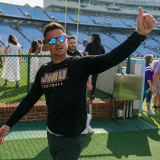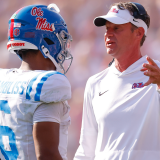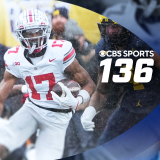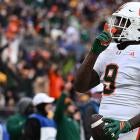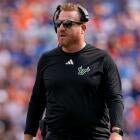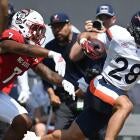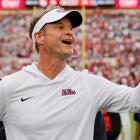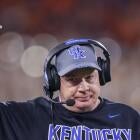2024 NFL Draft: Why the secret behind MAC's historical success can work in transfer portal era
Producing first-round picks is nothing new for the MAC, but doing it in the transfer portal era is more difficult

More than 50 scouts from all 32 NFL teams attended Toledo's Pro Day this year, even though the Rockets' top prospect, likely first-round pick Quinyon Mitchell, didn't work out. Instead, Mitchell stood on his NFL Combine numbers; the coveted cornerback ran a 4.33 in the forty-yard dash and had a vertical jump of 38 inches.
Twenty-three NFL teams sent representatives to Western Michigan, where defensive lineman Marshawn Kneeland is expected to be an early-round choice. His former linemates Braden Fiske and Andre Carter transferred to Florida State and Indiana, respectively, and are also expected to hear their names called during the draft, with Fiske a potential second- or third-round selection. That means that at one point in Kalamazoo, three draft picks were playing together along the defensive front.
What, exactly, are they putting in the Gatorade in the Mid-American Conference?
The answer is, nothing new. Long-time draftniks should be able to rattle off plenty of MAC players who have drawn crowds of scouts. Ben Roethlisberger, Khalil Mack, Eric Fisher, Joe Staley, Byron Leftwich and Chad Pennington are among the MAC's first-round picks since 2000. Kareem Hunt, Diontae Johnson, Sean Murphy-Bunting are other current notables in the pros. Prior to those names, James Harrison, Jason Taylor, Josh Cribbs, Antonio Gates, Antonio Brown, Greg Jennings, and Michael Turner came from the MAC, and the true historians who want to go back to Jack Lambert and Phil Villapiano can take it there.
But as teams grow their recruiting staffs, as online services like HUDL make it easier for recruits to send film to any school in the country, and as players are now able to be plucked via the transfer portal, it is notable that the MAC continues to produce high-end NFL talent.
"That's where you find yourself as a coach," says one former MAC assistant. "You learn what works, you figure out the type of player you work well with, and you can take some chances on kids, and when they hit, you start to establish what's important for you in evaluation."
The cliché is "if you're good, the NFL will find you."
That is not always as true in recruiting with the number of high school players there are to evaluate, and player youth means there's more projection of physical and mental development in recruiting than NFL evaluation. However, the success Football Championship Subdivision and Group of Five schools have enjoyed in producing NFL talent has lent even more credence to the thought that a player does not have to be at a blue blood, or even an FBS school, to be seen.
"It doesn't matter where you go, just play and be productive," said one NFL scout. "We are watching guys at South Dakota State who are better than half the guys at a Power Five school. The defensive linemen from Western Michigan, they went and dominated at Western. At those schools, you can still get to go to the Senior Bowl and the Combine, so you go where you get the reps and the playing experience."
"I think the blue bloods have to take a guy with stars and offers," says another former MAC assistant coach. "Ohio State couldn't have taken some of the guys we had success with. But those schools were also handcuffed by grades. We could prop guys."
Mitchell is one of the top cornerback prospects in this draft. His journey is a great example of a player who benefitted in needing to play at a Group of Five school.
"I think with Quinyon, he was at a camp in Florida and hardly anyone even knew who he was," says another former MAC coach. "In the MAC, and something Toledo and Jason Candle has done a great job with is, you still have to take guys with traits – size, athletic ability, but they are not fully developed yet so they go to a place like Toledo, and Toledo is going to devote their resources and coaching to him. That kid needed the years and the attention he got there, and now he's going to be a top-20 pick."
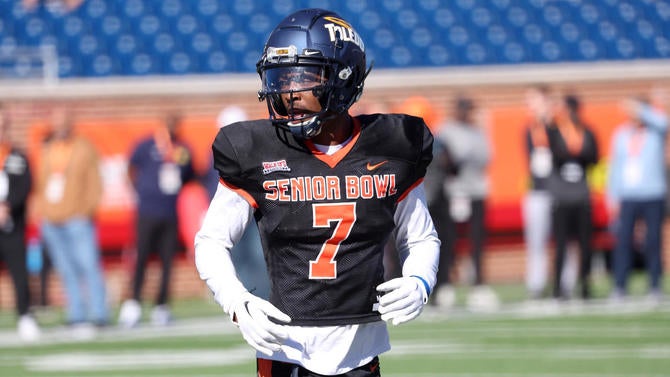
To that point, Fiske and Kneeland had no other MAC offers. Western Michigan was the only FBS offer in both of those cases. Their defensive line coach, Lou Esposito, was just hired at Michigan. Corey Davis played for P.J. Fleck at Western Michigan, and Fleck and his staff are now at Minnesota. Matt Campbell was at Toledo when the Rockets recruited Kareem Hunt and Diontae Johnson. His staff's success led to several of those assistants now being in the NFL: Tom Manning (Indianapolis Colts), D.K. McDonald (Philadelphia Eagles), and Lou Ayeni (Denver Broncos). Israel Woolfork, who was a key part of recruiting several Miami (Ohio) classes that finished at or near the top of MAC recruiting rankings, is now coaching quarterbacks for the Arizona Cardinals.
Those are just some of the examples of how the conference has not been just an incubator for pro players, but coaches who move to Power Four colleges and NFL clubs as well.
One industry source was quick to say that this draft is a spike for the MAC, but they don't see a duplication of the run in the 2010s, where the conference put out several first-rounders. The transfer portal was cited as a reason, but not everyone agrees that the MAC can't sustain its history of talent production.
"Senior tape eval is being lost," said a Power Four assistant. "It's funny, the best recruiting classes I've been a part of are when we first got to a school and had to start all over and all the best seniors were basically committed elsewhere already. It's shocking, but we ended up having good classes with a lot of guys people weren't recruiting but were really good players. You do that, then you start having success and winning games, and then you don't ever get to recruit that way again. The higher up you get, it can be easy to forget how you got there."
This spring, we have seen a handful of winter portal entries go to major programs, only to enter the portal again at the next opportunity.
So while it may seem as though the MAC will get raided in the portal if there are more Quinyon Mitchells on rosters, the examples of guys like Mitchell and Kneeland finishing where they started may be good anecdotes for potential portal entries to consider. Kneeland nearly transferred to Colorado but returned to Western Michigan and could now go as high as the second round.
"I think we will look back at these first years of the portal in the near future and ask how many of those guys did it work for?" says an NFL source. "Did it pan out or were you better off staying where you were?"

